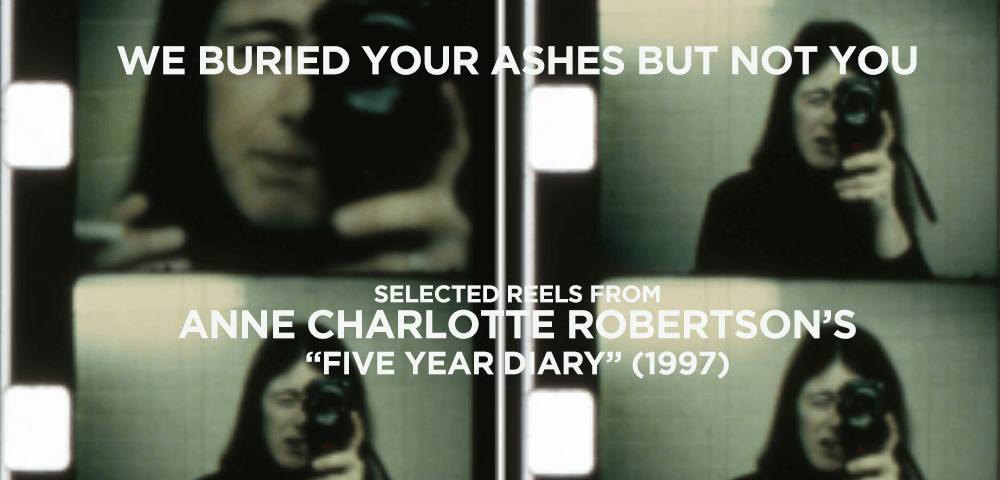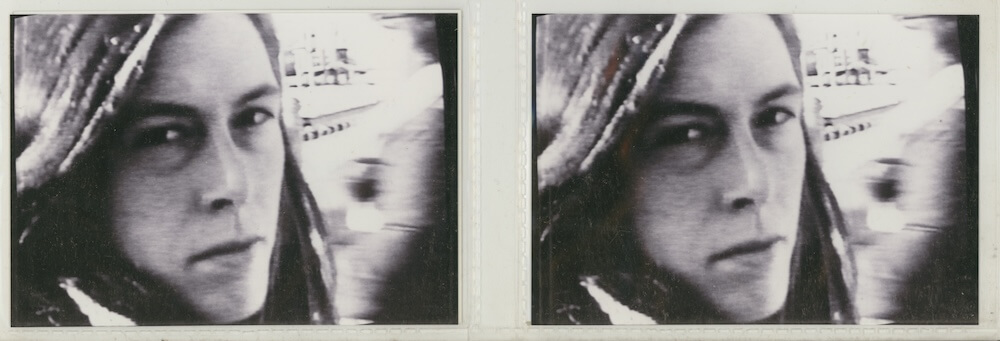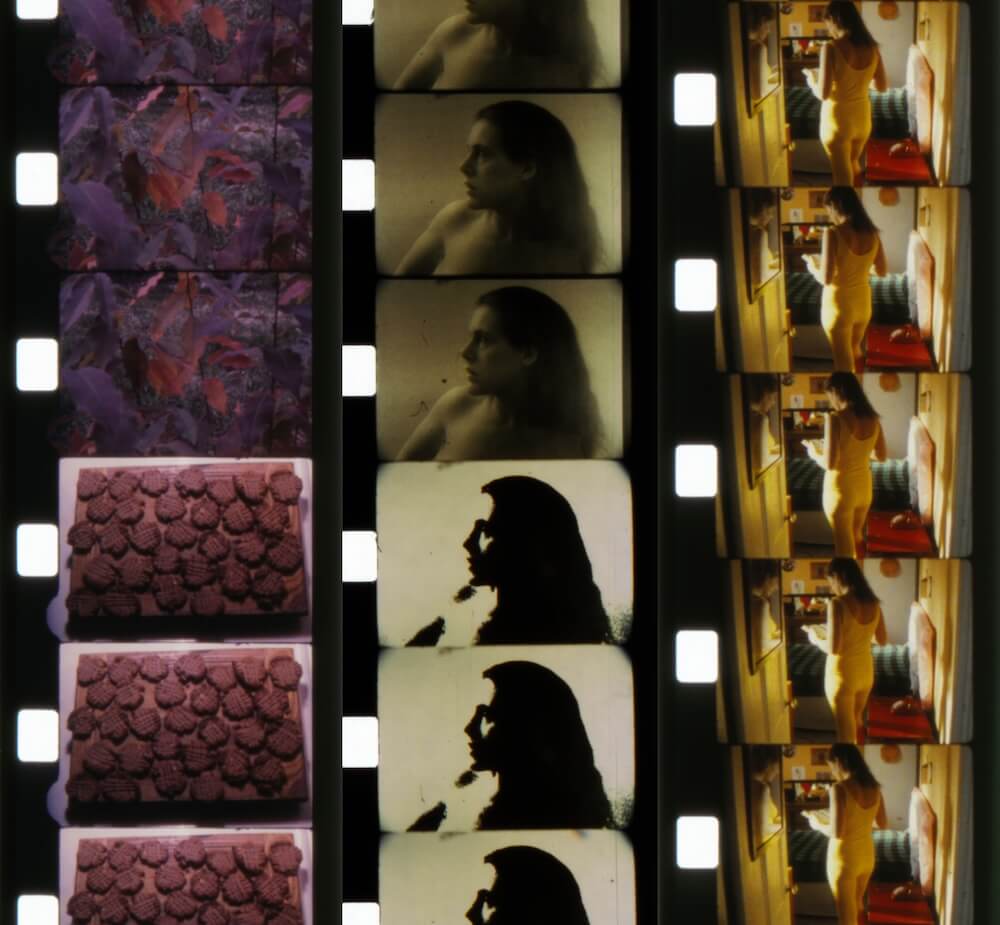
WEDNESDAY, NOVEMBER 13 – 7:30PM
Screening presented in collarboation with Crater Magazine. Includes a reading from “We Buried Your Ashes But Not You: Capital, Disability, and the Crisis of Womanhood in Anne Charlotte Robertson’s Reel 80: Emily Died” (publication forthcoming) by Emily Rose Apter.
“I believe in film being necessary every day,” filmmaker-diarist, Anne Charlotte Robertson, told film critic, Scott MacDonald, in a conversation on MacDonald’s back porch in 1992. She continued: “I’ve saddled myself with something, in effect, that prevents me from committing suicide. So it’s another way of saying that the film has kept me alive.”
That life-saving “something” was an exhaustive diary-keeping practice. As a child, Robertson kept a written diary and, in the mid-1970s, began recording daily scenes on her Super 8 camera. These hundreds of hours of footage—shot between school in Cambridge, MA and her mother’s house in Framingham—became her near-40-hour magnum opus, Five Year Diary (1997), consisting of 83 “reels” and chronicling not five but 16 years of life.
Gardens, true love, children, weight loss, death, filmmaking, schizoaffective disorders, medical professionals, drug regimens, side effects (arguably worse than the symptoms being treated in the first place): these were her raw materials, sketched with equal parts candor, humor, tenderness, and self-effacement. Layering sync-sound with voice-over narration, Robertson was quick to cut herself off—muddle, even contradict—her own first-hand experiences. And yet her films, often sequenced around the process of image-making, remain hyper-aware of their own architecture. “I’m trying to take a pretty picture, if that’s what you mean,” she retorted when MacDonald asked about technique.
Before her death in 2012, Robertson only presented the full Five Year Diary three times: twice in Boston and once in NY. She’d envisioned a multi-modal marathon event that enveloped trusted viewers with sound, image, and childhood artifacts—the fever pitch of pathologized consciousness. In the same conversation with MacDonald, Robertson noted: “Nobody, not even the psychiatrists, want to know how horrible the stories in your head are. I have never had a psychiatrist ask me, ‘And what do the voices say to you?’ […] They think that the person who is insane and hears voices is making them up and is in some way as evil as the voices.” For Robertson, both subject and object of her camera’s gaze, birth/death visibility/refusal expression/erasure illness/wellness were always negotiated, never binary. There were the symptoms—the voices, the delusions, the manic-depression—drenched in visual/sonic techniques, and there were the material conditions—more subtly rendered—that both produced these experiences and pathologized them. Out of this paradigm, she forged a uniquely feminist mode of diary-keeping that implicated film technique with the embodied and structural nodes of gender and illness.
Robertson could never afford to print copies of her films, and so was only ever editing and projecting the increasingly worn originals. Consequently, her screenings were full of “breakdowns” she explained, in more ways than one. It’s that falling apart/piecing back together that remains the essence of her work. In Five Year Diary, “art as survival” is neither metaphor nor platitude; it’s a way to flirt, sometimes dangerously so, with her own ability to keep on living. It’s therapy, not to correct but to heal, which—as Robertson knows as well as anyone—can feel an awful lot like coming undone. —Emily Rose Apter

TRT: 78 min.
The three reels in this program are from FIVE YEAR DIARY, descriptions are by Anne Charlotte Robertson and all are Super 8 on Digital Video.
Full Program Details:
REEL 23: A BREAKDOWN (AND) AFTER THE MENTAL HOSPITAL (SEPTEMBER 1—DECEMBER 13, 1982).
dir. Anne Charlotte Robertson
1991, 26 min.
“Within are documented a paranoid manic nervous breakdown, a description of a mental hospitalization, and the subsequent recovery period. Sound is of wild tape of the breakdown, and a hidden tape-recorded psychiatric session; the second soundtrack is narration from 1991.”
REEL 80: EMILY DIED (MAY 14—SEPTEMBER 26, 1994).
dir. Anne Charlotte Robertson
1994, 27 min.
“This is Reel 80 of my Super 8mm opus Five Year Diary. It covers the period May 14 to September 26, 1994. Within is personal documentary; midway occurs the death of my 3-year-old niece Emily ; the impact of her death is explored.”
REEL 81: MOURNING EMILY (SEPTEMBER 27, 1994—January 29, 1995).
dir. Anne Charlotte Robertson
1994, 25 min.
Anne Charlotte Robertson continues to mourn Emily’s death.

